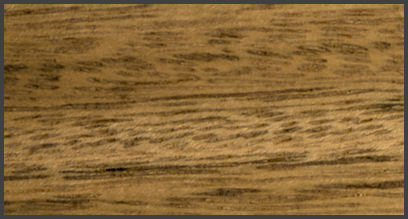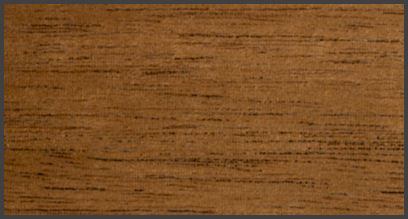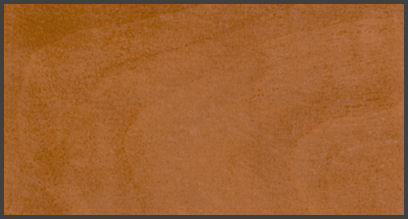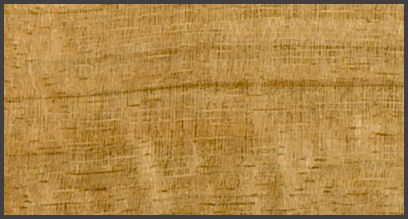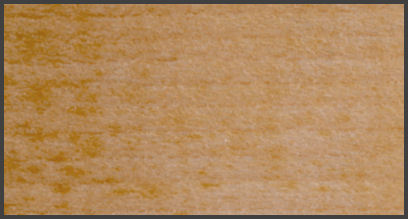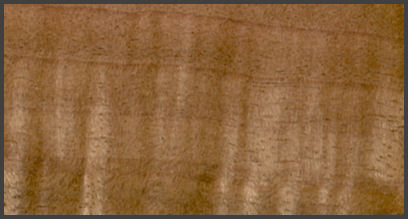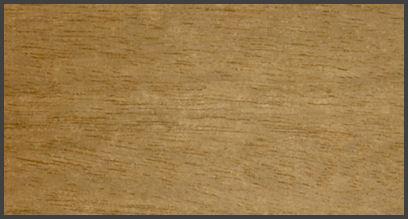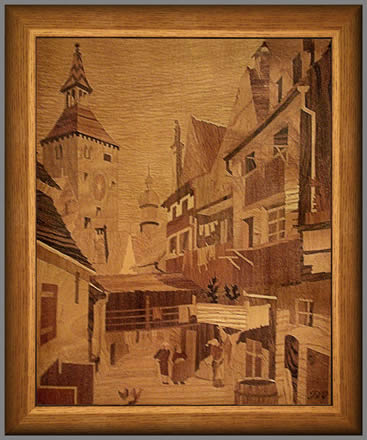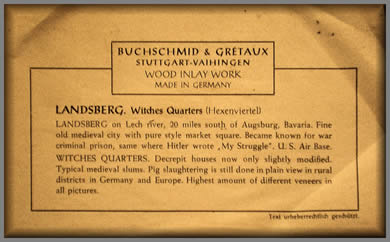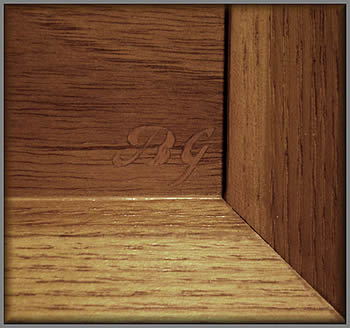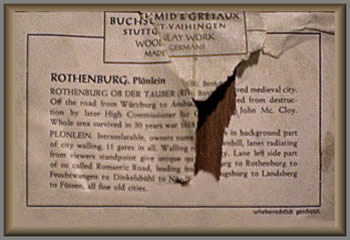|
 |
|
October, brings us more exquisite examples of the detailed marquetry work produced by the infamous Buchschmid and Gretaux wood inlay company. The not too often seen Witches Quarters is on display this month. It is a lovely picture, which, despite its title, is a very picturesque scene and is full of charm and 'friendly' magic! The true story of an encounter with Mr Buchschmid during World War 2 is an enthralling read we are sure you will enjoy. |
October's updates add more examples of the Buchschmid and Gretaux legendary marquetry output to our pages. The first picture you see on our October's page is the superb Witches Quarters from the Buchschmid and Gretaux catalogue. The veneer selection works really well in this picture. The Rosewood used for some of the shadow area is particularly effective. The veneer used for the sky looks very much like Aspen to our eyes. If you can find a good piece of Aspen with appropriate grain figuring, it can indeed be used to produce a very pleasing sky effect. Buchschmid and Gretaux state that this picture contains the largest selection of veneers of any of the pictures in its large catalogue. The picture obviously does contain quite a few veneers, so let's see if we can name most of them for you. The sky, as we've already said is Aspen.
The shadows on the stairs and main fence are Rosewood.
The frontage of the main house facing us looks very much like a combination of Walnuts, possibly European and Australian.
The street surfaces could well be Cherry for the lighter parts and Honduras Mahogany for the darker areas.
The remaining walls of the buildings and houses are most likely made from a combination of; Pear for smoother and slightly darker walls of the main house - Afara with the grain placed horizontally for the walls of the two 'tower' looking buildings. The roofs of those two buildings may be Lime and Eucalyptus, also placed horizontally. The darker shadows are probably more Walnut.
The street and other shadow surfaces give the appearance of Prima Vera
There are obviously several more veneers used for smaller parts of the picture, but the twelve listed and displayed above constitute the major part of the picture's make up. Slight tonal differences may be discerned between our examples and the ones seen in the picture, but the grain pattern and figuring of the various veneers helps very much to identify the veneers in those situations. As previously explained in these pages, climatic conditions (along with age) often causes colour changes to a degree with many veneers, so therefore some allowance should be made for these quite natural differences. We would like to offer our thanks to Kathy Hardeman for her generous help in providing valuable information concerning technical aspects of the two featured B & G wood inlay pictures displayed on this page. |
...............................................................
...............................................................
...............................................................
...............................................................
...............................................................
............................................................... |
|||||||
Information on the valuation of Wood Inlay or Marquetry pieces Please note that we (The Marquetry Society) are unable to give market reference valuations on any marquetry, or wood inlay works, or pieces of any kind. Quick Links to the other pages in this series: Next set of 'Can We Halp?' Pages from 51 onwards: >>> |
- |
|||||||
If you are using a different E-mail system to the M/S Outlook Express that our link boxes are utilising and your e-mail client will not open when you click the box, just copy and paste the following address into your "send to" box: info@marquetry.org or, if that is not possible, then just type it in as seen above, thanks. |




